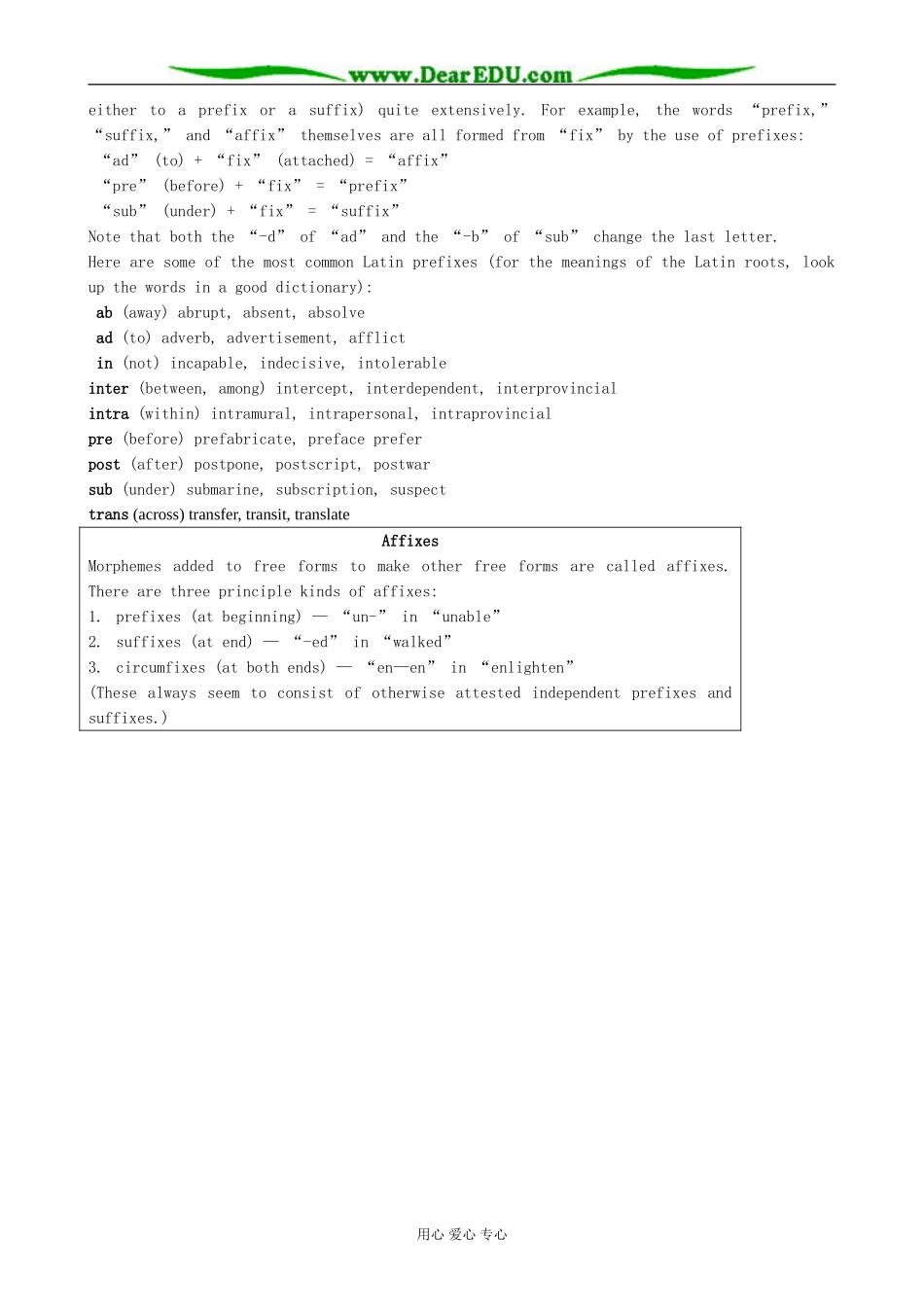Module 1 BasketballPeriod 3 Grammar -- Conversion and Suffix■Goal● Learn conversion and suffix▇ ProceduresStep 1: conversion 词性转化“Conversion” (called sometimes “full conversion”) is a word-formation process by which a word is altered from one part of speech into another without the addition (or deletion) of any morpheme. 词性转化指的是单词从一个词类转到另一个词类而不发生词形变化。1. noun →verbpaper―to paper the roommouth―to mouth some phraseshoulder―to shoulder the heavy loadbandage―to bandage the leg2. verb→nounto say something―to have a say to show ―to give a showto feel ―to have a feelto lead―to take a lead3. adj.→verbempty―to empty the bagwrong ―to wrong somebodyslow― to slow downbetter―to better your study4. adv.→verbback―to back a cardown―to down a planenear― to near the templeforward― to forward a message5. adj.→ noun.calm― a calm on the seahigh― a new high of the industrygood― a lot of goodright― to tell from right to wrongStep 2: suffix 后缀构词法包括合成、派生、转化和缩写简写。词缀是派生的一部分。The basic part of any word is the root; to it, you can add a prefix at the beginning and/or a suffix at the end to change the meaning. For example, in the word “unflattering,” the root is simply “flatter,” while the prefix “un-” makes the word negative, and the suffix “-ing” changes it from a verb into an adjective (specifically, a participle).English itself does not use prefixes as heavily as it once did, but many English words come from Latin, which uses prefixes and suffixes (you can use the word affix to refer 用心 爱心 专心either to a prefix or a suffix) quite extensively. For example, the words “prefix,” “suffix,” and “affix” themselves are all formed from ...

